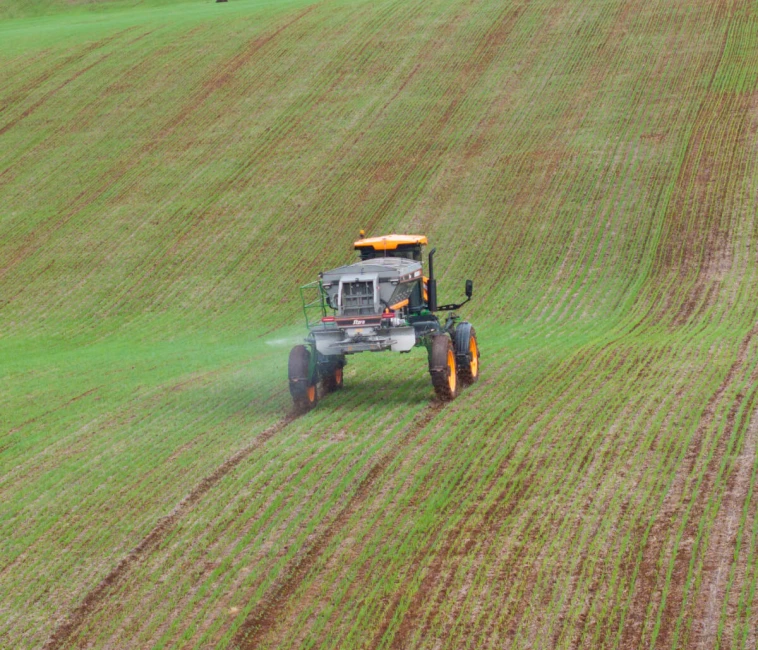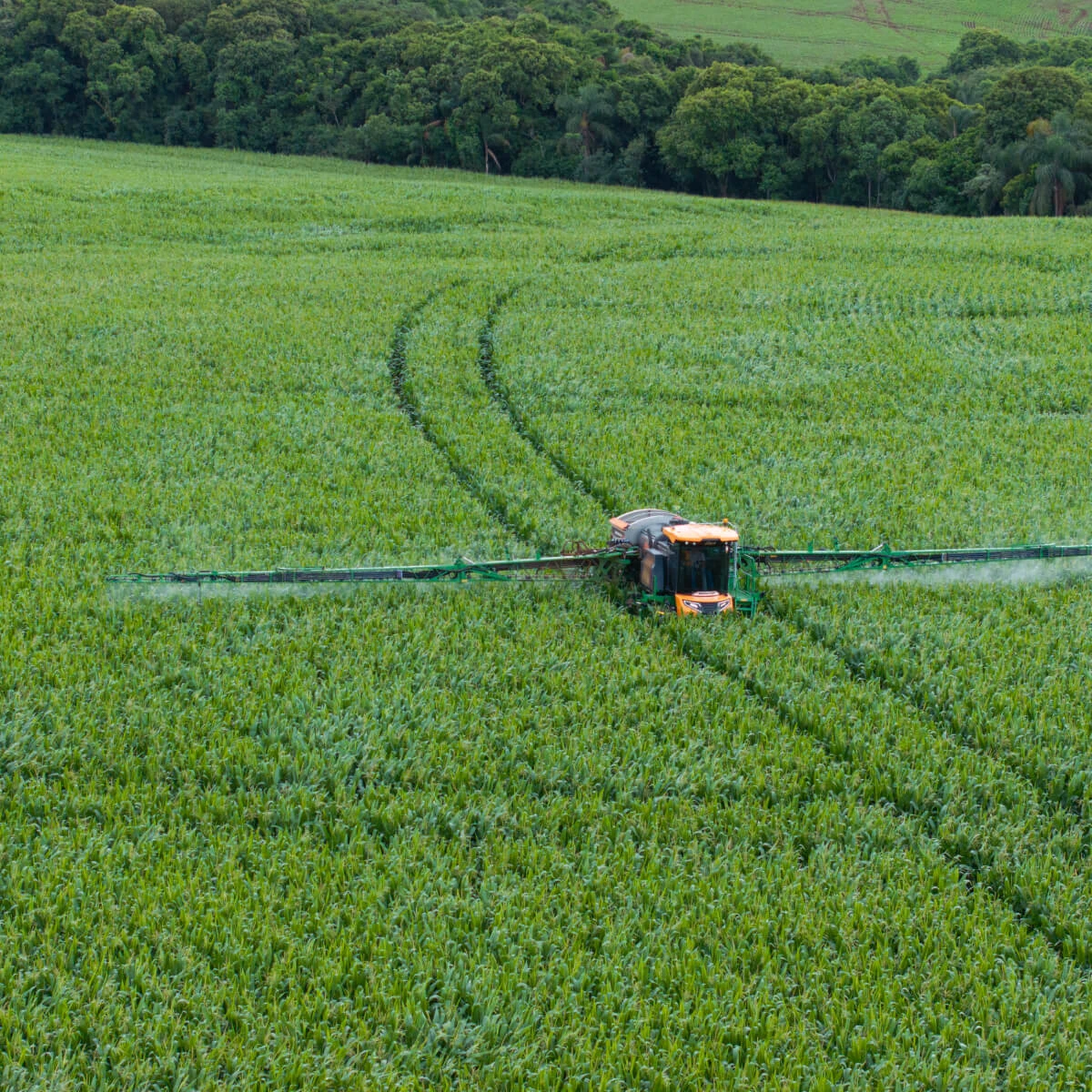The self-propelled spreader evolution has changed the way the inputs are applied in the field. With higher cutting-edge technologies, these agricultural machines provide higher precision, reduce waste, and increase the farm yield.
Either for the application of lime, fertilizers, or other substances for soil regulation, the on-board technologies allow you to control every operation detail to ensure economy, sustainability, and consistent results harvest after harvest.
In this article, you’ll learn five technologies that increase the self-propelled spreader efficiency and understand how they help with higher precise, fast, and economic applications.
Five on-board technologies on self-propelled spreaders
The current self-propelled spreaders feature smart systems that widen the control and precision of the operations. These resources are sensors and electronic controllers to mapping software and data analysis that allow faster and more assertive decisions.
In addition to making the operator’s job easier, the on-board technology ensures more uniform applications, reduces overlap and optimizes the usage of inputs.
The evolution is directly connected to Precision Agriculture, which pursues to balance yield, sustainability, and profitability, adapting each application to specific conditions of each crop field area.
See below, five solutions that transform this agricultural machine operation and help the farmer to get better results.
1. Agricultural controller for variable rate application
When applying at a variable rate, the agricultural controller automatically adjusts the number of inputs, according to the prescription map to avoid excesses and ensuring that each area receives the exact metering.
- Direct advantage: lower costs and higher efficient application;
- Soil impact: improving the uniformity and avoiding the overload of nutrients.
Practical example: when applying lime or fertilizer at a variable rate, the self-propelled spreader can correct areas with poor nutrients without wasting product where the soil nutrients are good. As a result, boosting the investment return.
2. GPS system integrated into the agricultural controller
The integrated GPS instructs on the path and the self-propelled spreader application areas with higher precision. As a consequence, it ensures that every operation is executed aligned and without overlap or failures.
On the Stara machines, the GPS receptor is integrated into the Topper agricultural controller. The technology ensures that the input is applied exactly where it’s required to follow the agronomic planning and avoiding waste.
The GPS integrated to the agricultural equipment also favours the information precision available in Telemetria Stara and Machine Monitoring System, which are specialized Stara services.
For the agricultural machine operator, using the GPS in the field means safer and more reliable operations. As a consequence, reducing the need of manual adjustments and making the navigation easier, even in large areas or with low visibility.
On the other hand, for the farmer, the result is clear: time optimization, lower fuel consumption, and getting most out of the machine, directly impacting in less operating costs.
3. Auto steering function
Technologies such as the auto steering allow the agricultural spreader to follow the same paths with autonomy by keeping the constant alignment and speed during all the operation.
On the Stara self-propelled spreaders, the auto steering is integrated into the high precision GPS systems, resulting in lower operator’s fatigue and ensuring that each pass follows exactly the planned path.
The gain in yield is significant: while the system watches the navigation, the operator can focus on the machine adjustment, performance monitoring and application quality.
It results in consistent applications, which ensures uniform applications even during long operating hours under the most varied operation conditions, such as in bumpy terrains or with low visibility.
When applying fertilizer to large areas, the auto steering eliminates overlaps and failures. As a result, reducing the waste of inputs and maximizing the operation hours efficiency.
4. Agricultural monitor connected to technical assistance
The on-board agricultural monitors on the self-propelled spreaders can be directly connected to the manufacturer technical assistance.
The Stara Topper controller, for instance, allows the remote access to technical support to help the operator in the machine cab.
By means of Conecta, the Stara remote technical assistance service, the manufacturer experts can access the agricultural machine data in real time. Therefore, they instruct the operator immediately through WhatsApp to correct failures and ensure the operation efficiency in the field.
The connection not only avoids yield losses, but it’s also an ally in the preventive maintenance, which allows the operator to identify worng performance and act before minor adjustments become bigger problems.
The records are stored for further analysis to ease the data management; the comparison of performances and constant improvement strategies aligned to Precision Agriculture.
5. Remote management application to adjust the spreader through the cell phone
Some self-propelled spreaders are already equipped with digital resources that make the essential operation steps easier. An example is the Stara Spreading Application developed to speed up and ease the agricultural spreader calibration.
Thanks to it, the operator performs the adjustment by following the instructions indicated by the mobile phone application, especially in relation to the vane adjustments. The technology shortens the required time to prepare the agricultural machine, avoids application errors, and contributes for more uniform and efficient spreading.
Learn more: The Stara Application speeds up the agricultural spreader calibration
How to choose the self-propelled spreader with the right technology?
When investing in a self-propelled spreader, it’s crucial to assess which agricultural technologies meet the needs of your farm better.
Factors such as the input type applied, the operation area, topography, and the integration to the Agricultural Precision system should be part of the decision.
Self-propelled spreaders as Hércules 4.0 and Hércules 6.0, for instance, are equipped with resources such as the variable rate, GPS integrated, and real-time monitoring, delivering high performance and input savings.
Additionally, counting with skilled technical assistance makes sure the machine operates at its maximum efficiency.
Conclusion
In this article, you learned the main technologies that can boost the self-propelled spreaders efficiency. When investing in precision solutions, the farmer reduces costs, improves the application quality, and extends the agricultural machine lifespan.
Now that you know the main resources, assess which ones better match your crop field reality and count on modern self-propelled spreaders to boost the field efficiency.
Did you like the hints and want to find out the agricultural machine that best suits your crop field?
Stop by a Stara dealer and find the most suitable equipment to boost your crop production. Request a quotation.









